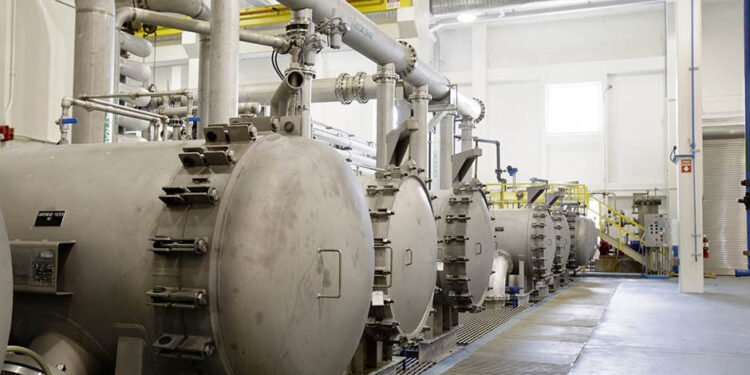Industrial pressure vessels play a crucial role in various sectors, such as oil and gas, chemical processing, power generation, and many others. These vessels are designed to contain and store substances under high pressure, making them subject to stringent design and manufacturing code and standards to ensure safety and reliability. In the United States, where safety standards are paramount, the design and manufacturing process of pressure vessels must adhere to specific regulations and guidelines like API tank inspection and STI SP001.
This article explores the key considerations in the design and manufacturing of industrial pressure vessels.
Regulatory Compliance:
Designing and manufacturing industrial pressure vessels in the USA requires compliance with several regulatory bodies, including the American Society of Mechanical Engineers (ASME) Boiler and Pressure Vessel Code (BPVC). The ASME BPVC provides guidelines and standards for the design, fabrication, and inspection of pressure vessels. Compliance with these codes is necessary to ensure the safe operation and integrity of pressure vessels in industrial settings.
Material Selection:
Choosing the appropriate materials is critical in pressure vessel design. The materials must have suitable mechanical properties to withstand the high pressures and temperatures encountered during operation. Common materials used in pressure vessel construction include carbon steel, stainless steel, and various alloys. According to Arrowhead Economics’ manufacturing consulting services, factors such as corrosion resistance, temperature range, and mechanical strength must be carefully considered during material selection to ensure optimal performance and longevity of the pressure vessel.
Design Codes and Standards:
Designing a pressure vessel inspection services involves following specific codes and standards that ensure its structural integrity and safe operation. In the USA, the ASME BPVC Section VIII Division 1 provides guidelines for the design of pressure vessels. It outlines requirements for vessel geometry, thickness calculations, nozzle design, and reinforcement considerations. Adhering to these design codes and standards is crucial to prevent failures, leaks, and other safety hazards associated with pressure vessels.
Pressure and Temperature Considerations:
Industrial asme pressure vessel operate under varying pressure and temperature conditions. Design engineers must carefully consider the maximum operating pressure and temperature to ensure that the vessel can withstand these conditions without compromising safety. The design should account for factors such as thermal expansion, cyclic loading, and stress concentrations to prevent fatigue failure over the vessel’s intended lifespan.
Welding and Fabrication:
The welding and fabrication processes in pressure vessel manufacturing are critical to maintaining structural integrity. Qualified welders and welding procedures must be employed to ensure strong and defect-free joints. Non-destructive testing methods, such as radiography and ultrasonic testing, are often employed to detect any welding flaws or defects that could compromise the vessel’s integrity. The fabrication process should also include procedures for heat treatment, surface preparation, and quality control to ensure the vessel meets the required standards.
Quality Assurance and Inspection:
Quality assurance and inspection procedures are essential to ensure that pressure vessels meet the required standards and specifications. Inspections may involve dimensional checks, material testing, pressure testing, and non-destructive testing to detect any defects or weaknesses. Besides this, the vessel inspection services must be carried out by professional and certified inspectors. Regular inspections and maintenance throughout the vessel’s lifespan are necessary to ensure ongoing safety and reliability.
Environmental Considerations:
Pressure vessels used in certain industries, such as chemical processing, may handle hazardous or corrosive substances. Designers must consider the potential environmental impacts of the stored substances on the vessel’s materials and integrity. Corrosion-resistant coatings, liners, or specific material selections may be necessary to protect the vessel from chemical attack and prevent leaks or failures.
Documentation and Certification:
Proper documentation and certification are vital in the manufacturing of pressure vessels. Manufacturers must maintain detailed records of design calculations, material certifications, welding procedures, inspection reports, and quality control measures. Certifications, such as the ASME U-Stamp or National Board Registration, indicate that the vessel meets the required standards and has undergone the necessary inspections and tests.
Designing and manufacturing industrial pressure vessels in the USA requires careful consideration of regulatory compliance, material selection, design codes, pressure and temperature considerations, welding and fabrication processes, quality assurance and inspection, environmental factors, and documentation and certification. Adhering to these considerations ensures the safety, reliability, and longevity of pressure vessels in various industrial sectors. By following the guidelines set forth by regulatory bodies like the ASME, manufacturers can confidently produce pressure vessels that meet the highest standards of quality and safety.












